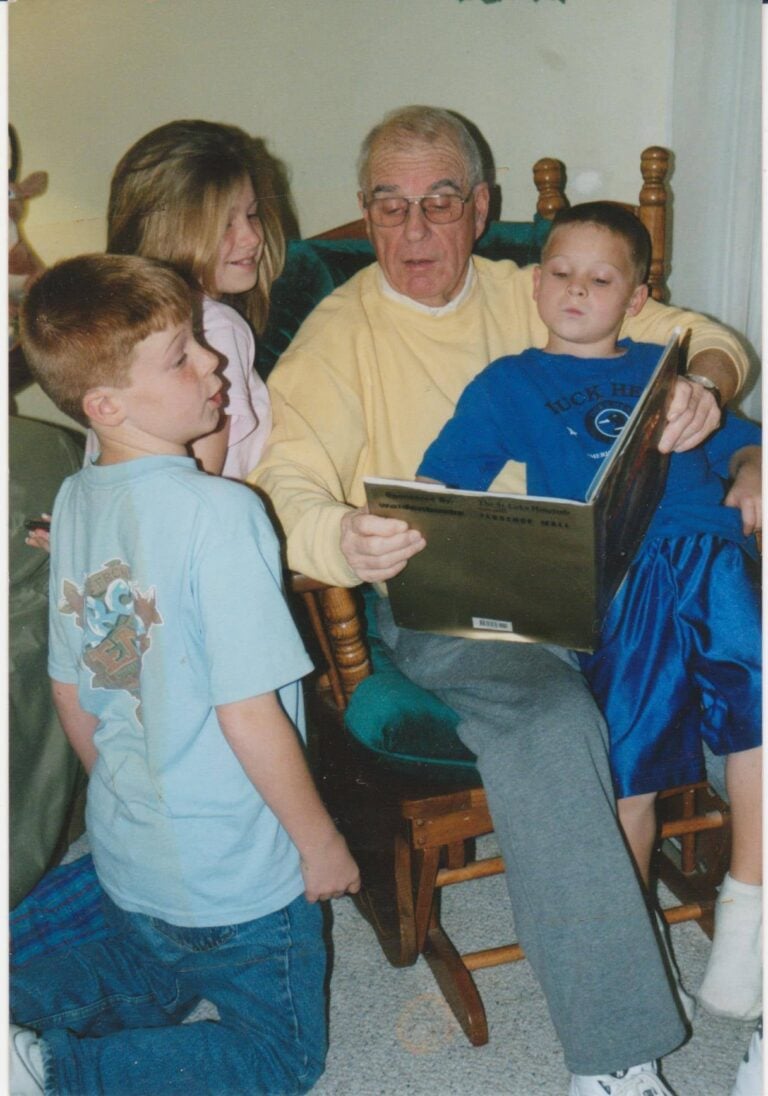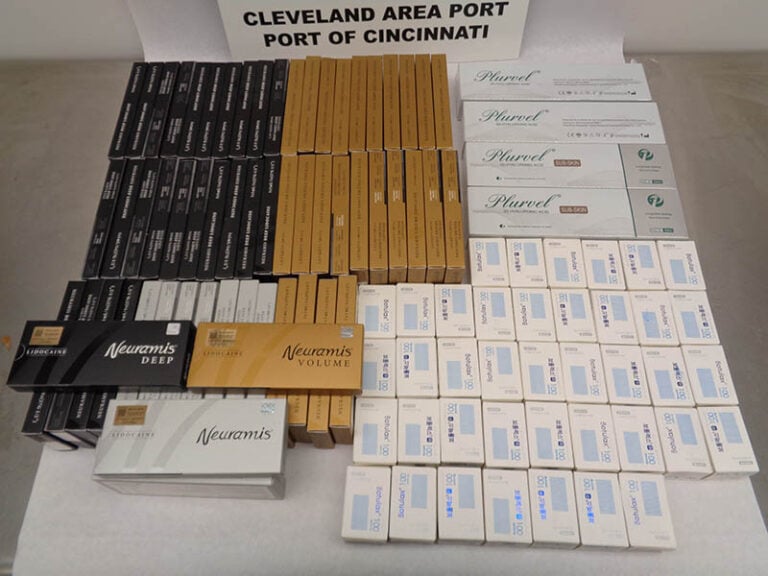The Kentucky Historic Preservaion Review Board will be considering seven nominations for the National Register of Historic Places at its meeting November 8 in Frankfort.
Among the seven nomination is The Lubber House at 1205 Lee Street in Covington. It’s a 2 1/2 story brick building, currently uninhabitable, that was built circa 1877 and has maintained its historic footprint. The Lubber House was owned by a German immigrant, offering transitional housing for immigrant populations to aid their integration and assimilation into American society. The property played a significant role in shaping the economy and culture in the greater Cincinnati area, particularly Covington.
It is now privately owned.

The house is a side-gabled brick dwelling with pediment hood moldings and stone sills. The projecting sills on the front façade are supported by corbelling brackets. The windows on the north façade have smooth stone lintels and sills. The roof line supports box gutters. The cornice consists of single hung brackets with alternating panel and window configuration. The building’s tall and narrow design along with façade detail recalls the Italianate style, which was popular for both residential and commercial buildings between 1850 and 1890.
Its Italianate style is ubiquitous throughout the city of Covington and represents a major period of development within Covington during the mid to late 19th Century. The area proposed for the National Register listing is 0.08 acres and includes one contributing building.
George Wolke, a German immigrant was the owner of the property when it was constructed. The property was historically used a German boarding house. Many of the residents that lived there came to the U.S. directly from Germany and the house appears to have been used as a half-way home for newly migrated immigrants to acclimate before moving out on their own.
The property has been unoccupied and unhabitable for at least 17 years. The overall condition is poor. The Lubber House was one of four buildings that were preserved and not torn down in Covington during the KY 1120 (12th Street) Improvement Project. It was preserved due to its high quality of exterior architectural features and its historic significance in the City of Covington 12th Street corridor. The area is highly trafficked and the ability to renovate and redevelop this building would improve the visual setting of the community, increase housing availability, and would restore the building to be a desirable place to live as it was for most of its history.

With the influx of German immigrants pouring into Cincinnati and Covington, George Wolke, a German immigrant who had migrated to the area earlier in the 19th Century, built the boarding house to meet the demands of the new arrivals to the area. Where an average German boarding house may have been a small dwelling, with a couple rooms housing from 4-8 boarders, the Lubber House was a much more imposing structure. It occupied a corner block location and rose 3 floors in height. Its several rooms housed 15-20 German immigrants at a time between 1877-1910.
The Lubber House also had the characteristics of a significant boarding house because of its desirable location. The house was located close to some of Covington’s largest employers which was advantageous to the boarders that were seeking employment opportunities. It was within walking distance of the Bavarian Brewery, once the largest brewery in Kentucky and the largest employer in Covington. It was also just two houses down from the Hellmann Lumber Mill, one of the largest employers in the Southwest Covington neighborhood.
It was also conveniently located to several community churches such Mutter Gottes and Cathedral Basilica of the Assumption, as well as near the Covington Turner Society Hall.
See more about the Lubber House (with pictures) here.
Other nominations being considered include:
• Millersburg Historic District (Additional Doc.) — Properties along Vimont, Main and Trigg Streets, Millersburg: This nomination extends the Period of Significance of the Millersburg Historic District, originally listed in 1986. The Millersburg Historic District encompasses most of the City of Millersburg, located in Bourbon County, in Kentucky’s north central Bluegrass region.
• Camp Crescendo — Bullitt County, 1480 Pine Tavern Road, Lebanon Junction: Camp Crescendo is a midcentury domestic camp facility located northeast of Lebanon Junction, Kentucky. Camp Crescendo was planned and operated by Roy E. Boesser (1914-1995), the music director of Louisville Male High School, as a residential summer camp for the training of school bands, majorettes, drum majors and cheerleaders. It reached its peak attendance in the mid-1970s with more than 4,000 students attending in week-long sessions over a single summer. This innovative concept drew bands to participate from all over Kentucky and from most surrounding states to train and improve their music programs at a level more on par with college bands.
• Luigart Malt House — Fayette County, 110 Luigart Court/754-758 N. Limestone, Lexington: The Luigart Malt House complex evolved structurally from the mid-19th to mid-20th centuries in a manner that reflected the changing economic climate of Lexington and the rampant industrialization of the Loudon area. The site includes two linked buildings with three sections that were respectively built in the 1850s, 1881 and 1922. The malt house is an anchor facility that contributed to North Lexington’s significant growth; it is also one of the few surviving buildings that evokes this history.

• Armour & Co. Branch House — Jefferson County, 201 E. Main Street, Louisville: The former Armour & Co. Branch House is a utilitarian, three-story industrial building with a full basement located at the northeast corner of East Main and North Brook Streets on the east side of downtown Louisville, Kentucky. Armour & Co., one of the “Big Five” meatpackers in the early twentieth century, located the branch house in Louisville near a major railyard and immediately widened their market to the construction of branch houses in other cities in Kentucky and the south.
• Theodore Roosevelt Elementary School — Jefferson County, 222 N. 17th Street, Louisville: The Roosevelt School is a three-story school constructed in 1866 in a modified Renaissance Revival style. This nomination proposes to expand the Period of Significance of the listed Theodore Roosevelt Elementary School to 1956, when an addition was built onto the original school so that the addition can be rehabilitated for use as apartments.
• Glass Mill Complex — Jessamine County, 1995 Glass Mill Road, Wilmore vic.: The property is significant within the industrial and economic history of Jessamine County and its association with the rural milling industry in Central Kentucky. Mills of all types: sawmills, gristmills, even paper mills were important industrial locations that enabled Kentuckians to transform a wilderness into a fully functioning state. The Glass Mill was one of a few such operations in Kentucky, turning cloth rags and wood pulp into paper and showing how much energy early Kentuckians required to produce the most essential product, writing paper, which we can purchase easily today.
Administered by the National Park Service and State Historic Preservation Offices, the National Register is the nation’s official list of historic and archaeological resources deemed worthy of preservation. Kentucky has the fifth highest number of National Register listings in the nation, with more than 3,400 listings of districts, sites and structures encompassing more than 42,000 historic features.
The Kentucky Historic Preservation Review Board comprises members appointed by the Governor, whose primary responsibility is to review and approve nominations to the National Register. The majority of the membership is made up of professionals in the fields of history, archaeology, architectural history, architecture and historic preservation.
Nominations approved for listing by the Review Board are forwarded for final consideration to the National Park Service.





















